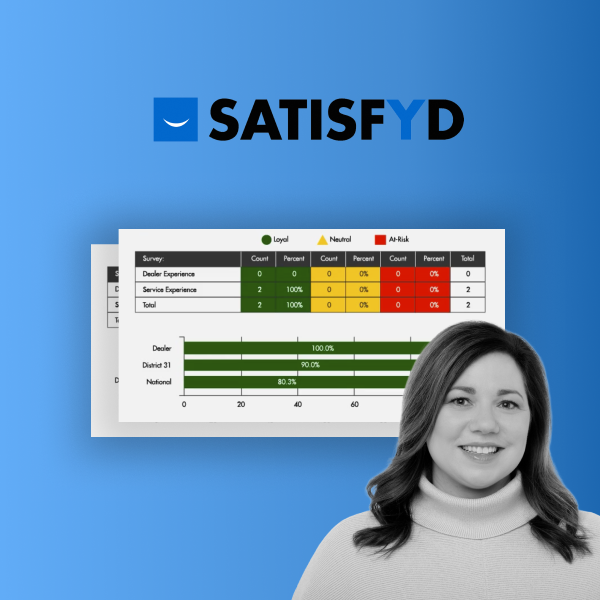Like most tech-driven industries, the world of business intelligence (BI) and analytics continues to evolve at a rapid pace. Emerging technologies like artificial intelligence are changing the BI landscape and paving the way for new opportunities, use cases, and efficiencies in how organizations interact with their data.
Even so, the fundamental elements of BI and analytics have remained at the forefront of decision-makers' minds since before the pandemic. BARC’s Data, BI & Analytics Trend Monitor 2024 highlights the evolution of global BI trends, including which longstanding topics have remained on top and which new focus areas have risen through the ranks in more recent years.
In this blog post, we’ll highlight the top three trends in BARC’s report and discuss how organizations can prioritize or further integrate them into their BI strategies in the coming years.
#1 Data Security and Privacy
Why It Matters: This is data security and privacy’s first year in BARC’s study, and it rose straight to the #1 spot in the BI trends ranking. The more data generated, the greater the fear that that data will be exposed to risks. This fact is especially true as organizations shift to hybrid and cloud-based operations in which their data passes through multiple tools and systems. What’s more, the recent rise in data breaches has stoked the general fear that a company might be hacked, attacked, and held liable for compromised information.
How to Prioritize It: A proactive strategy is the most effective form of protection against potential data security threats. So, rather than waiting for a breach or other concern to arise, your organization should invest in a BI platform with built-in security features and customizable access controls. This will allow you to limit access to relevant users only and control who sees what from one central management client.
It’s also essential to be sure your employees understand their role in securing company data. Do they regularly update passwords and avoid storing login information on shared devices? Do they know and abide by company security policies? How do they share sensitive information with internal and external collaborators? Setting clear expectations and promoting team buy-in will help keep your data secure and make it easier for individual users to identify potential threats before they negatively impact your operations.
#2 Data Quality Management
Why It Matters: Your organization’s data quality directly impacts the effectiveness of your reports. If reports are based on incomplete, outdated, or incorrect information, you’ll never be able to generate a true picture of how your business is performing or where you should focus your resources. And unlike a processing error or missing data source, data quality issues can lurk beneath the surface, going undetected for months as you continue to create reports or inaccurately track key performance indicators (KPIs).
How to Prioritize It:
Poor data quality often stems from:
- Manual data entry in an ERP or similar business system opens the door to human errors like miscalculations and fat-fingering, which leads to data inaccuracies in your reports.
- Lack of well-defined business processes might cause two branches or even two individual employees to log the same type of data in completely different ways.
- Business system integrations can create data duplications and mismatches due to insufficient data preparation and object labels that don’t match up between systems.
The first step toward improving data quality is increasing data visibility. You need a clear understanding of your current data quality concerns and any errors that may already be happening behind the scenes.
Depending on your findings, implement a proactive data quality management strategy that keeps your data clean and your reports accurate. For example, you might establish an SOP for data entry, automate data entry in certain systems, or adopt a more proactive approach to system integrations focused on cleaning up and mapping source data before moving it to the new system.
#3 Data Governance
Why It Matters: Data governance is closely intertwined with many other top BI trends in BARC’s study, including data quality, data security/privacy, and decision intelligence. Proper data governance is essential to a successful data strategy, as it dictates how data will be managed and protected across all business systems, not just within an organization's BI solution of choice.
This concern is especially relevant as cloud adoption leaves organizations with less direct control over their data. As questions arise over what is and is not protected internally, organizations must also consider how each software vendor in their tech stack fits into their overall data governance strategy. At the same time, organizations are continuously adapting to distributed work environments in which managers and executives access data from afar.
How to Prioritize It: Data governance requires a multi-faceted focus on data quality, privacy, and access across your organization. So, in part, prioritizing the first two trends outlined in this post will help support an effective data governance strategy.
You should also establish dedicated data governance policies that outline responsibilities and guidelines for managing data throughout your operations – not just when it comes to BI and analytics. Among other things, these policies should address regulatory compliance, data security audits, and data lifecycle management: how and when data is created, used, archived, and deleted.
Honorable Mention: Data Warehouse Modernization
Data warehouse modernization was the number eight trend in this year’s Trend Monitor report, and it ranked number six among best-in-class organizations. The concept of data warehouse modernization stems from the realization that legacy data warehouses simply aren’t equipped to handle the agile, integrated environments in which today's businesses operate.
Organizations are ready to invest in modern software to power their data analytics operations rather than attempting to 'maintain' legacy tools through layers of patches and workarounds. To do this, they must assess their existing data warehouse against current demands and evaluate how updated hardware, technology, and architecture could streamline operations. Then, they should look for a data warehouse solution that’s purpose-built for their industry and operating model, prioritizing things like cloud enablement and integration capabilities that fit their unique needs.
See All the Trends for 2024
BARC’s Trend Monitor evaluates the top 20 global BI and analytics trends through the eyes of BI users, consultants, and vendors.
Download the complete Data, BI & Analytics Trend Monitor 2024 to explore all of the top BI trends and discover seven key recommendations for integrating them into your own operations.
Source: Data, BI & Analytics Trend Monitor 2024, Ó 2023 BARC








